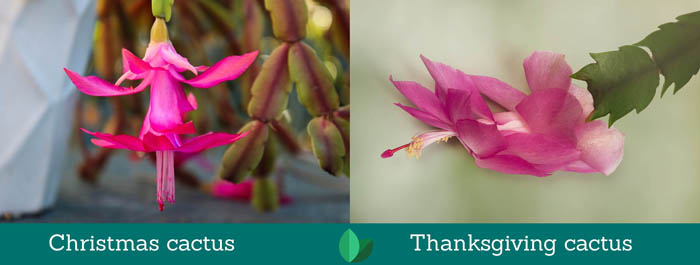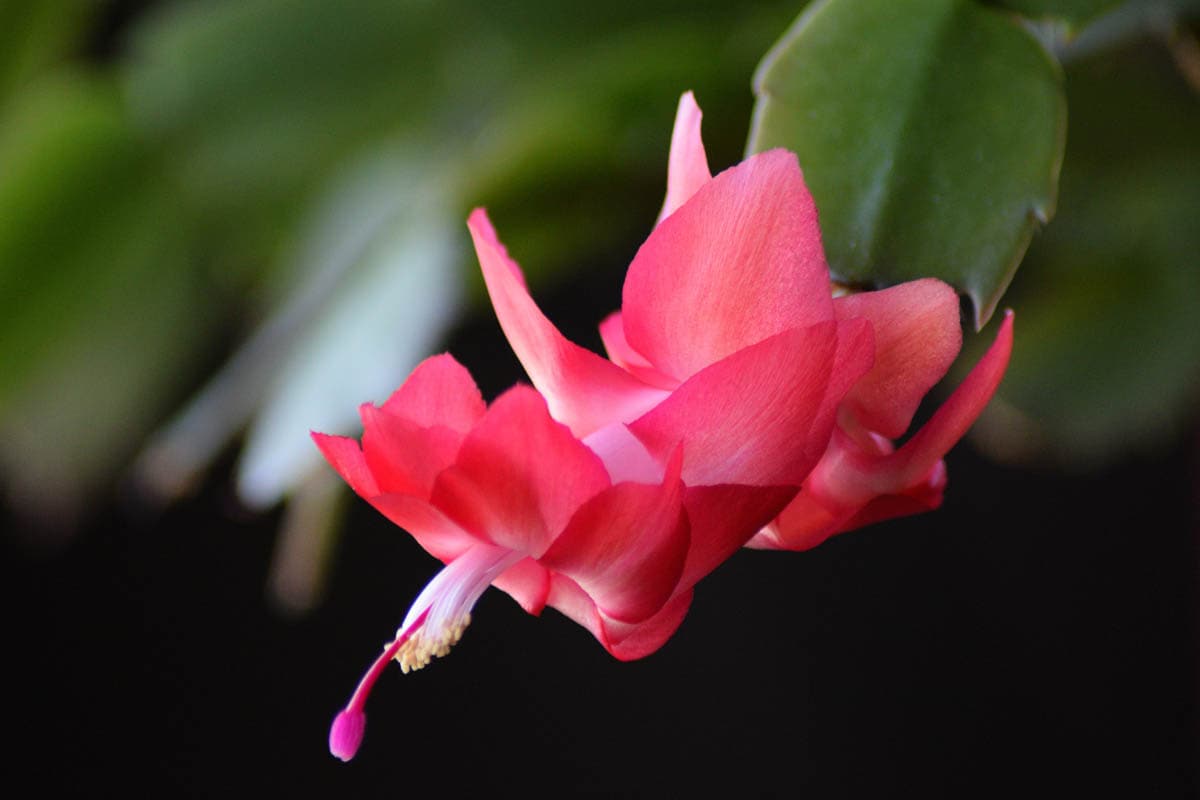Is Thanksgiving toxic to cats?
Thanksgiving cactus (Schlumbergera truncate) is non-toxic to cats.
What is Thanksgiving cactus?
| Family | Cactaceae |
| Botanical name | Schlumbergera truncata |
| Common names | Thanksgiving cactus, False Christmas cactus, Crab cactus, Holiday cactus |
| Plant type | Succulent, cactus, perennial |
| Flower colour | Red, pink, white, yellow, purple |
| Native to | Brazil |
| Toxicity | Non-toxic to cats |
Thanksgiving cactus is a popular tropical cactus native to Brasil that blooms around Thanksgiving. In the wild, Schlumbergera species grow on the surface of tree branches (epiphytes) in rain forests.
The crab-like serrated, segmented flat stems (known as phylloclades), grow out in a characteristic arch, making them a perfect hanging plant. Flowers grow in a variety of colours including red, rose, purple, lavender, peach, orange, cream, and white.
Thanksgiving cactus can be grown outdoors in warm climates but unlike other succulents, it prefers to grow in partial shade.
Are Thanksgiving cactus and Christmas cactus the same?

Thanksgiving and Christmas cactus are not the same, although it is easy to confuse the two as they both boom later in the year and have a similar appearance. Thanksgiving cactus has 2-4 saw-toothed serrations (claws) along the margins and the Christmas cactus has rounded serrations (scallops).
Safety
While Thanksgiving cactus is non-toxic to cats, fertilisers and pest repellents used on or around the plant may be potentially toxic.
Toxic and non-toxic Christmas plants

Cats can’t differentiate toxic plants from non-toxic plants and poisoning can occur. Kittens are particularly at risk due to their curious nature. The level of toxicity can vary from mild to life-threatening.
Do your homework before you bring plants and cut flowers into the home so that your cats stay safe.
Common name |
Scientific name |
Toxicity level |
| Holly | Ilex spp. | Mild to moderate |
| Mistletoe | Phoradendron flavescens, Phoradendron serotinum and Viscum album |
Mild to moderate |
| Poinsettia | Euphorbia pulcherrima | Mild |
| Ivy | Hedera spp. | Mild |
| Lily | Lilium spp. | Severe |
| Daylillies | Hemerocallis spp. |
Severe |
| Hippeastrum | Hippeastrum spp. | Mild to severe |
| Norway spruce | Picea abies | Non-toxic |
| Blue spruce | Picea pungens | Non-toxic |
| Serbian spruce | Picea omorika | Non-toxic |
| White spruce | Picea glauca | Non-toxic |
| Nordmann fir | Abies nordmanniana | Non-toxic |
| Fraser fir | Abies fraseri | Non-toxic |
| Douglas fir | Pseudotsuga menziesii | Non-toxic |
| Noble fir | Abies procera | Non-toxic |
| Balsam fir | Abies balsamea | Non-toxic |
| Grand fir | Abies grandis | Non-toxic |

